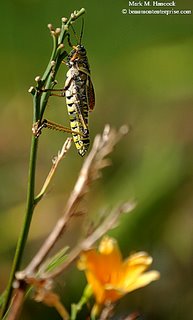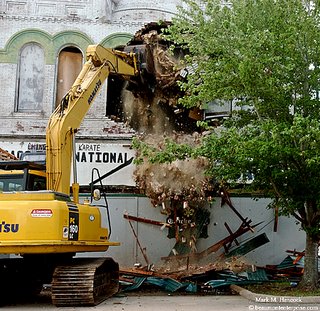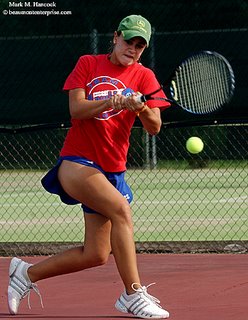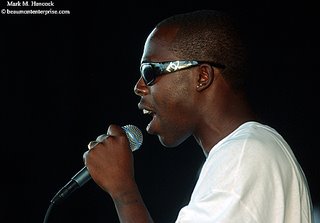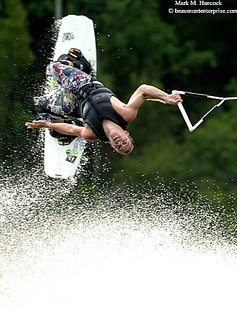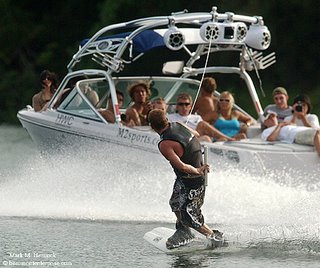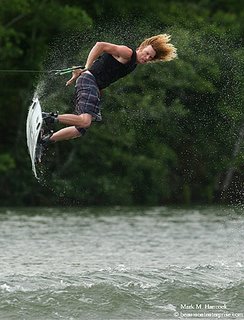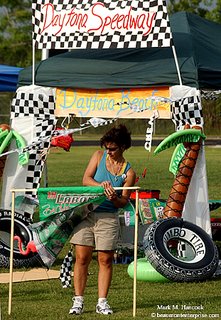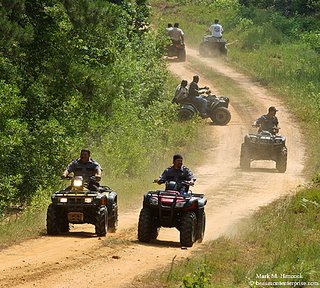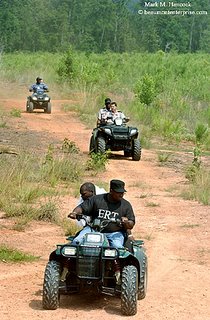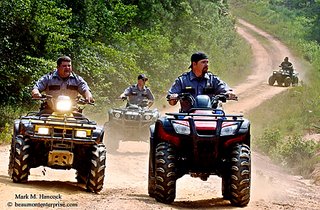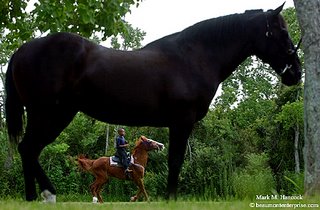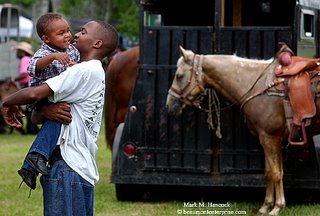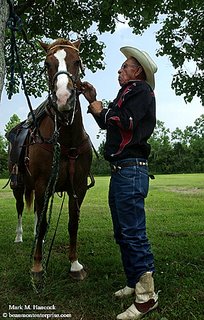A camera is a tool. As a hammer might be used by a cabinet manufacturer, a violin maker or even a musician, the camera is used by professionals in different fields. Each field has its own ethical code and use for the camera as well as the resulting images.
With this understood, let's consider the different fields of photography. PJs tend to be the chameleons of photography. Depending on what's needed, we shift our technique to emulate other styles (while maintaining our
ethical standards and
personal style). In a single day, a PJ may shoot any number of categories on location and in the studio.
Periodically, we're going to explore some of the different professions to appreciate what they do and what we can learn from their experience. But first, we must understand what these genres are.
Major genres of still photographyThe broad categories of photography are
editorial,
commercial,
architectural,
consumer portraiture,
fine art,
corporate,
public relations and
scientific. Within these categories are numerous subdivisions as well as
hybrid classifications.
EditorialThe purpose of editorial photography is publication. Editorial photography can be anything that is not overt advertising. Because editorial photographers create content for publications (both consumer and industry), this field encompasses many styles and ethics levels. Photojournalism and fashion photography are subcategories of editorial photography.
Most publications (newspapers and magazines) separate the editorial and advertising sections to avoid conflicts of interest. However, an editorial PJ may shoot for both sections.
This can be one of the lowest-paying fields of photography. However,
overhead costs are low after initial investment. Most images in this genre carry a credit line.
Digital SLR (or 35mm film) cameras are most common in this field of photography.
CommercialCommercial photographers create images for packaging and large advertising campaigns. Images are created according to the clients specifications. They're often highly styled and employ advanced lighting techniques, elaborate sets and frequently employ models.
While local advertising is created by publication photographers and use of the images is controlled by the publication or the pub's photographer, commercial images are contracted and handled by the art director of an advertising agency or the purchasing corporation.
This is one of the highest paying fields of photography. Likewise, this field has the highest overhead costs. These images frequently carry no credit line and are provided as part of a finished product to publications and other forms of display (billboards, busses, etc...). Large and some medium format cameras are common in this field of photography
ArchitecturalArchitectural photographers help their architecture and construction clients land the next big job (think million$). Architectural images also have secondary roles for editorial, fine art and commercial uses.
Competition is fierce in this field while jobs are infrequent. Professionals in this field must know how to light interiors to match the exterior and may wait several days for the perfect light.
This is also a high paying field of photography. Depending on use, images frequently carry a credit line. Large and medium format cameras with bellows (for perspective control) are critical in this field of photography. Other photographers that prefer a lighter approach or faster delivery use digital cameras with
perspective-control (PC) lenses.
Consumer portraitureConsumer portrait photographers produce prints to sell to individual consumers. Often, portrait photographers have storefront studios. Much of their profit margin results from auxiliary sales such as frames and albums.
Wedding and public-consumption sports photographers as well as superstore retailers are subcategories of this field.
Income depends on the portrait photographer's ability to get and sell to consumers and keep profit margins. Overhead expenses can be very high. Final images are almost always in print form with the studio's name printed into the paper or canvas. Studio owners keep all copyrights. Medium format, 35mm and digital SLRs and some large format cameras are common in this field of photography
Fine artFine art photographers produce museum-quality artworks in print (paper and/or canvas) form. Final prints are commissioned for museums and private collections. Numbered series prints are also sold to art collectors through galleries, art representatives and fine art competition shows.
The artist's name is often the selling point of the image (usually prints) and prints are frequently signed by the artist. Large and medium format as well as SLR (35mm film or digital) cameras are common in this field of photography.
CorporateCorporate photographers can produce commercial and/or public relations images. They additionally produce images for in-house and corporate annual reports. At smaller corporations, they also produce publications (writing, design and photography).
Income is slightly higher than editorial photographers while having no overhead costs. It's unusual for the corporate photographer to get a credit line outside of an in-house arrangement. Corporate photographers generally have no rights to the images they produce. Digital SLR (35mm range) cameras are most common in this field of photography. The equipment is provided by the corporation.
Public relations (PR)Public relations photographers help businesses promote themselves. Public relations professionals hire PR photographers to illustrate turn-in articles or document events to create good will for their clients.
Although PR photographers primarily capture images, they frequently must also engage in back-end image activities for the clients (providing prints, pre-press images, etc).
Initial payment is higher than editorial photography. However, the image's purpose is to provide free content to publications. Therefore, aftermarket and stock uses are unlikely. It's unusual for the PR photographer to get a credit line outside of a contractual arrangement with each client. Digital SLR (35mm range) cameras are common in this field of photography.
ScientificScientific photographers illustrate and/or document scientific problems, theories and results. These images are primarily used for textbooks, scientific journals and in-house at medical facilities and/or manufacturers. Scientific photographers often must perform public relations and corporate photography roles as part of their employment.
Scientific photographers employed by corporations (often called technical photographers) document processes for patents as well as research and development. Often, these images are closely guarded by the company and are never seen outside of the company and patent office.
Meanwhile, visual sociologists have made several attempts to gain traction as a social science field. As such, its use is primarily limited to documentary work for textbook and grant proposals. Because their work looks similar to photojournalism, most clients outside academics are reluctant to hire (and pay much more for) visual sociologists.
Scientific photographers often have advanced degrees and are paid appropriately, but medical facility staff openings are rare (these jobs also require a strong stomach). Depending on use, scientific photographers occasionally get credit lines. Digital SLRs (35mm range) and medium format cameras with specialized or
micro lenses are common in this field of photography. Specialized lighting techniques and
equipment are often required to document scientific experiments.
Hybrid photography fieldsBecause a camera is simply a tool, not all uses of this tool fit into neat categories. Many photographers fall into several categories simultaneously. Oceanographers, who invest in specialized
underwater equipment, are immediately scientific photographers. However, the oceanographer's client dictates the genre as well as the images' subsequent uses.
For example, an oil company may hire the oceanographer to document oil rig fittings. However, images from the dive could have uses in publications, textbooks, museums, or in advertising campaigns. The same oceanographer might earn the majority of her income selling prints to beginning divers or underwater wedding parties.
The same holds true for aerial photographers and a host of other similarly specialized hybrid photography styles. Most hybrid photography professions are proprietor operations or freelance.
Deliberate cross genrePhotographers deliberately cross genres. Often, this is done to generate income. Sometimes it's done to keep valued clients.
Editorial photographers often step into commercial and architectural roles to augment income while remaining in a lower-paying field. Some commercial photographer may accept editorial work (magazine illustrations) simply to gain clients through credit line recognition.
Recently, editorial photographers have become prized by commercial portraiture clients (primarily for high-end weddings). Although this cross genre jump is easy from a shooting point of view, industry requirements (taxes, sales negotiations, contracts, up-front payment, expectations, ethics, etc.) are frequently vexing to editorial shooters and may come with significant pitfalls.
Often, changing genre for a day means more than switching hats for the photographer. Commercial photographers, who are accustomed to illustrating their ideal vision with models and sets, may find editorial ethics (i.e. "ugly truth") difficult for their training in visual perfection. However, if they're working as a PJ, they must play by the same ethical rules as a PJ (i.e. don't change the truth).
Why classify at all?The reason photographers are classified by genre is to set approach rules, clientele, overhead needs and education. The sooner a photographer decides upon a path, the more prepared the photographer will be upon entering the marketplace.
Many PJs avoid large format cameras in college to concentrate on their SLR specialization. Likewise, commercial photography students don't tend to work at university newspapers (breaking news and view cameras typically aren't good companions).
Furthermore, advanced PJ students use summer breaks for internships at newspapers while commercial and architecture photographers participate in mentorships or work as photo assistants for established photographers in their chosen field.
By adhering to a particular specialization throughout the educational process, photographers learn by osmosis the rules of survival in the field. For example, PJs learn not to set up images (negative feedback) while commercial photographers learn how to do it perfectly (positive feedback).
Looking forwardThis post is intended as a primer for folks considering photography options. We haven't addressed the need for higher education or the minutia of each genre. Over time, we'll (hopefully) have interviews with top photographers in these other fields to help folks choose a path and/or learn more about each others' camera-totin' professions.
Enough for now,





